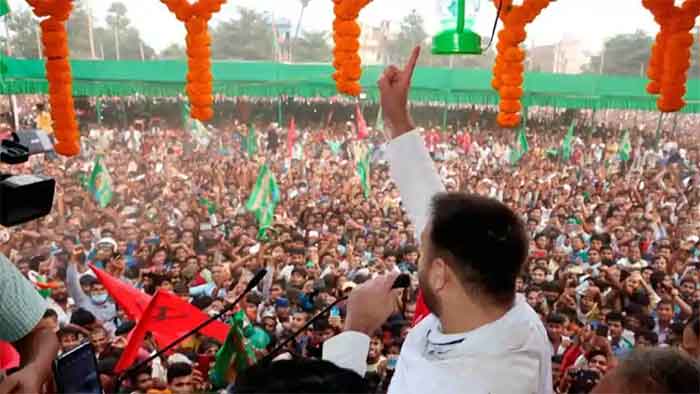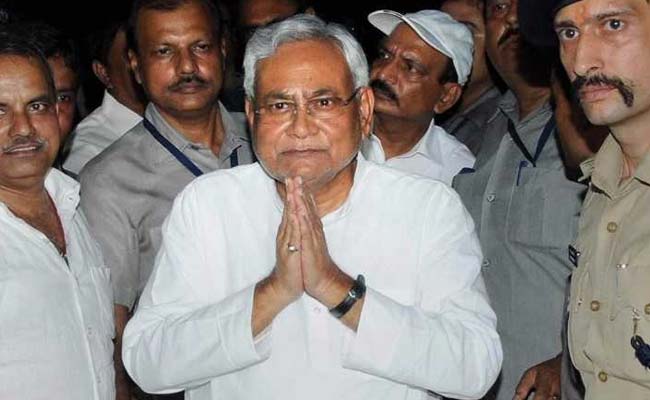Co-Written by Dr Shekh Moinuddin & Dr Akhtar Hussain Ansari

Bihar Assembly election 2020 was the first post Covid-19 election in India and considered decisive in terms of digital mapping when all election procedures and processes admired digital technology effectively and efficiently. We are living in the era of digital democracy when Covid-19 has left no choice to all of us rather to accept digital technology for further experiment in democracy. Though, digital experiment was going since Parliament election 2019 and in fact, moved to a new level after Bihar election 2020 when political parties successfully organized digital rallies to reach voters and used LED screens to hold multiple rallies at the same time in the vicinity from domain rally podium.
Bihar became the first state in terms of population after the USA in the world who are going to choose a new government for them. USA chose Joe Biden and Kamala Harris as their President and Vice President respectively while the result of the Bihar election is due and announced on 10 October 2020. However, all exit polls projected Tejashwi Yadav as the new leader. Bihar Assembly election 2020 was evident that digital platforms would play a decisive role in the organization of digital election rallies, digital election posters, target voters (through AI profiling by Facebook or other involved agencies), digital election meetings in order to reach out to voters. Digital political activities started a couple of months back when BJP organized a digital rally to reach out to their sympathisers. This election will create a new landscape for future elections not only in terms of campaign, rallies, meetings rather to propagate false information, misinformation, inauthentic information and handling to all such will be a herculean task for the Election Commission of India in the country.
This election is important in the sense that who managed to fill the gaps of digital divides that is persistent in the society or won the election rather to decode the role of digital gadgets in the society where digital divide is inevitable that reflects in various representations. In Bihar, digital divides are wider in comparison to other states as per Telecom Regulatory Authority of India (TRAI). Digital divides are an issue of concern unlike literacy rate in the past, nowadays every hand has a smartphone. The reasons behind digital divides in the state are: socio-economic status, income, education, race, caste, gender, geographic (rural-urban) location, age, skills, awareness, political, cultural and psychological attitudes. According to TRAI, digital divides in Bihar deciphered an undisclosed saga and administrative failures wherein 20.60 person in 100 person accessed Internet in rural areas while in urban areas the rate of Internet penetration is almost 92.99 person in 100 person. In other way, around 25.37 million people from rural areas have Internet connection while in urban areas the rate of Internet subscribers is 18.52 million and in total it is around 43.88 million people have Internet subscriptions in the state. Although, there is no exact figure to access the exact number of private Internet subscribers but in a tentative estimation that may be ranged in between 70-80 percent of total population who are enjoying Internet facilities or using digital gadgets in mundane ways to being connected throughout the world. The rural-urban demography wherein around 89 percent people lived in rural areas while around 11 percent lived in urban areas according to 2011 census of India. Literacy rate of Bihar is 63.82 percent (73.39 percent for males and 53.33 percent for females), recording a growth of 20 percent in female literacy over the preceding decade. Out of 123 million population around 80 million are youth population. Bihar registered the highest growth in internet users across both urban and rural areas, registering a growth of 35 percent over last year. Nearly 28 percent of the population uses the Internet in the state in comparison to India it is 36 percent. Bihar has enough potential to consume digital gadgets than other states wherein around two-third demography is young and less than 50 years of age are looking forward for digital development. The scope of digital gadgets is evident to reduce digital gaps in the state.
Though, there is no exact digital data on Bihar but we can map the expansion and participation of users through proportional calculation. India joined the club of top ten social media users in the world. Social media users in India stood at 326.1 million in 2018 and expected to be 448 million by 2023 and Facebook remains a platform as of 2017. According to Statista 2020, Facebook had shown the highest traffic at around 86 per cent among social media platforms followed by Instagram 5 percent and You Tube 3.2 per cent in April 2020 in India. The popularity of social media companies has consistently attracted more in comparison to the last quarter of the financial year. The other social media networking sites like WhatsApp, Instagram and YouTube are far behind from Facebook in terms of volume of traffic. In 2018, around 24 per cent population accessed the social networks and the rate will further anticipate with time and expansion of digital infrastructure in the rural belts in the country. Mark Zuckerberg himself said how India is very important in Facebook’s history. According to echoVME news about 71 per cent of India’s population aged between 18 to 34 years use Facebook alone. In 2015, out of 112 million users on Facebook in India, around 99 million are phone users. The percentage from male to female ranges from 76 to 24 per cent. More or less the role of Facebook and WhatsApp will be crucial to both voters and politicians to use these technologies to reach them.
Dr Shekh Moinuddin associated with Jamia Millia Islamia and author of five books and published fifteen research papers in national and International Journals. He completed six funded research projects and his academic interests areas are social media, media geography, e-religiosity and digital democracy.
Dr Akhtar Hussain Ansari, IRS (Indian Revenue Service).
SIGN UP FOR COUNTERCURRENTS DAILY NEWSLETTER














































